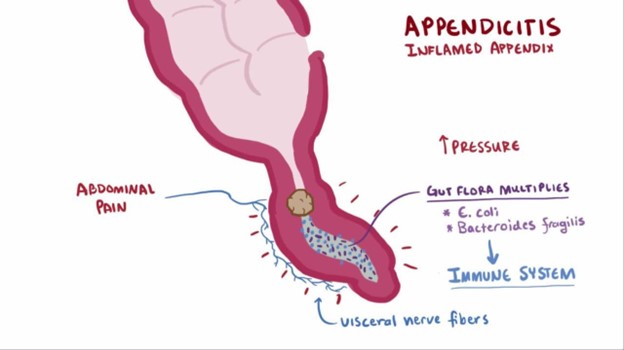d
Factor X
Steroids
immunizations that the patient is scheduled for
PCA Morphine
The Correct Answer is C
A. Factor X is a clotting factor involved in the coagulation cascade. It is not directly related to preventing infections. While clotting factors are essential for hemostasis, they do not play a role in infection prevention.
B. Steroids can suppress the immune response, making the child more susceptible to infections. Therefore, they are not specifically administered to prevent infections
C. In a child with a sickle cell crisis who is hospitalized, preventing infections is crucial due to the increased risk of infections in this condition. Administering immunizations that the patient is scheduled for can help prevent certain infections.
Children with sickle cell disease are at a higher risk of bacterial infections, especially from encapsulated organisms like Streptococcus pneumoniae and Haemophilus influenzae. Vaccines can help protect against these pathogens and reduce the risk of serious infections.
Some of the recommended immunizations for children with sickle cell disease include:
Pneumococcal vaccine: This helps protect against infections caused by Streptococcus pneumoniae, which can cause severe respiratory and bloodstream infections.
Haemophilus influenzae type B (Hib) vaccine: This protects against infections caused by Haemophilus influenzae type B, which can lead to serious illnesses like pneumonia and meningitis.
Meningococcal vaccine: This protects against Neisseria meningitidis, which can cause meningitis and bloodstream infections.
Influenza vaccine: This annual vaccine helps protect against seasonal flu, which can be severe in children with sickle cell disease.
Administering these vaccines according to the recommended schedule helps provide protection against certain infections and can improve outcomes for children with sickle cell disease during hospitalization and beyond. The other options, Factor X, steroids, and PCA morphine, are not specific measures for preventing infections in a child with sickle cell crisis.
D. PCA (patient-controlled analgesia) morphine is used for pain management during a sickle cell crisis. It does not directly prevent infections.
Nursing Test Bank
Naxlex Comprehensive Predictor Exams
Related Questions
Correct Answer is C
Explanation
Infants with gastroesophageal reflux should be placed in an infant seat or an upright position after feedings to help prevent regurgitation and aspiration of stomach contents into the airway. Placing the infant in an upright position facilitates gravity-assisted movement of stomach contents down and away from the esophagus, reducing the likelihood of reflux. It is essential to ensure that the infant seat is appropriate for the child's age and size and that the infant is safely secured within it.
The other options are not recommended for infants with gastroesophageal reflux:
When caring for an infant with gastroesophageal reflux (GER), the nurse should place the infant in an infant seat or an upright position following feedings. Placing the infant in an upright position helps to reduce the risk of reflux and regurgitation. Gravity can assist in keeping the stomach contents from flowing back into the esophagus, reducing the potential for discomfort and reflux symptoms.
The other options are not recommended for an infant with GER:
A. Placing the infant in a prone position (lying on the stomach) after feedings can increase the risk of choking and aspiration. It is essential to avoid this position, especially after feeding, to reduce the risk of reflux and its complications.
B. Placing the infant on his left side is not the preferred position for GER management. While the left side is often recommended for sleeping to reduce the risk of sudden infant death syndrome (SIDS), it is not specifically indicated for GER management after feedings.
D. Placing the infant on his right side is also not the preferred position for GER management after feedings. The right side does not provide the benefits of an upright position in reducing the risk of reflux and regurgitation.
Correct Answer is B
Explanation
The nurse should clarify the prescription to administer sodium biphosphate/sodium phosphate because it is a laxative and is contraindicated in a child with suspected appendicitis. The use of laxatives or enemas can potentially worsen the condition by increasing the risk of perforation or rupture of the inflamed appendix.
A. Monitoring oral temperature every 4 hours is important to assess for signs of infection or worsening condition.
C. Maintaining NPO status is essential to avoid stimulating the digestive system and to prepare for possible surgery.
D. Medicating the client for pain every 4 hours as needed is appropriate to manage pain and provide comfort while the child awaits further evaluation or treatment.
Remember, it's crucial to avoid the use of laxatives, enemas, or any other interventions that can potentially aggravate the inflamed appendix in a child with suspected appendicitis.

Whether you are a student looking to ace your exams or a practicing nurse seeking to enhance your expertise , our nursing education contents will empower you with the confidence and competence to make a difference in the lives of patients and become a respected leader in the healthcare field.
Visit Naxlex, invest in your future and unlock endless possibilities with our unparalleled nursing education contents today
Report Wrong Answer on the Current Question
Do you disagree with the answer? If yes, what is your expected answer? Explain.
Kindly be descriptive with the issue you are facing.
